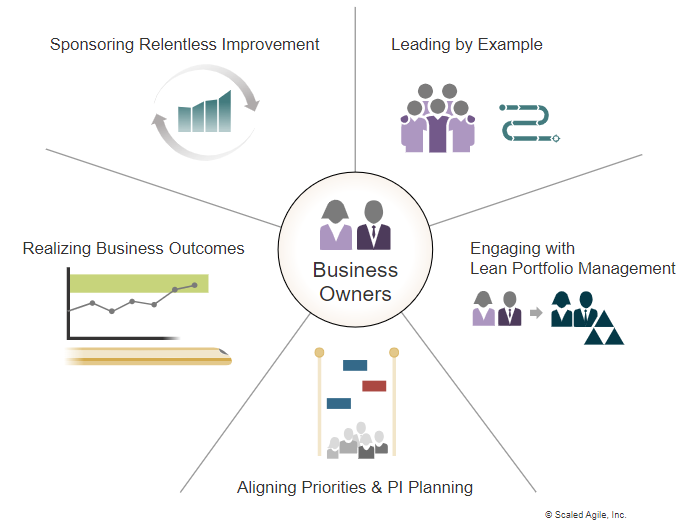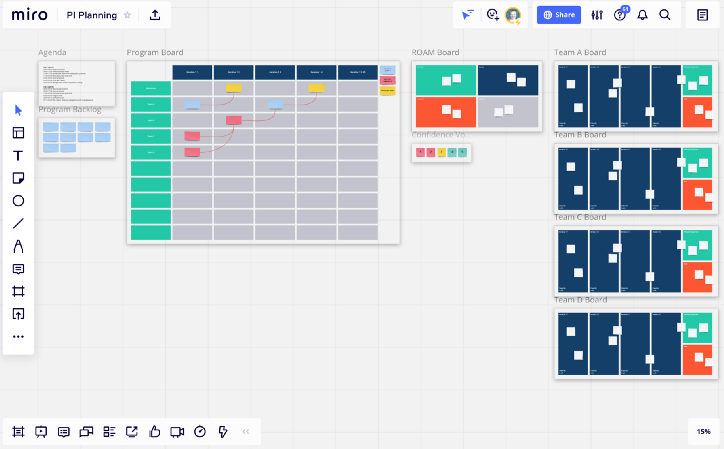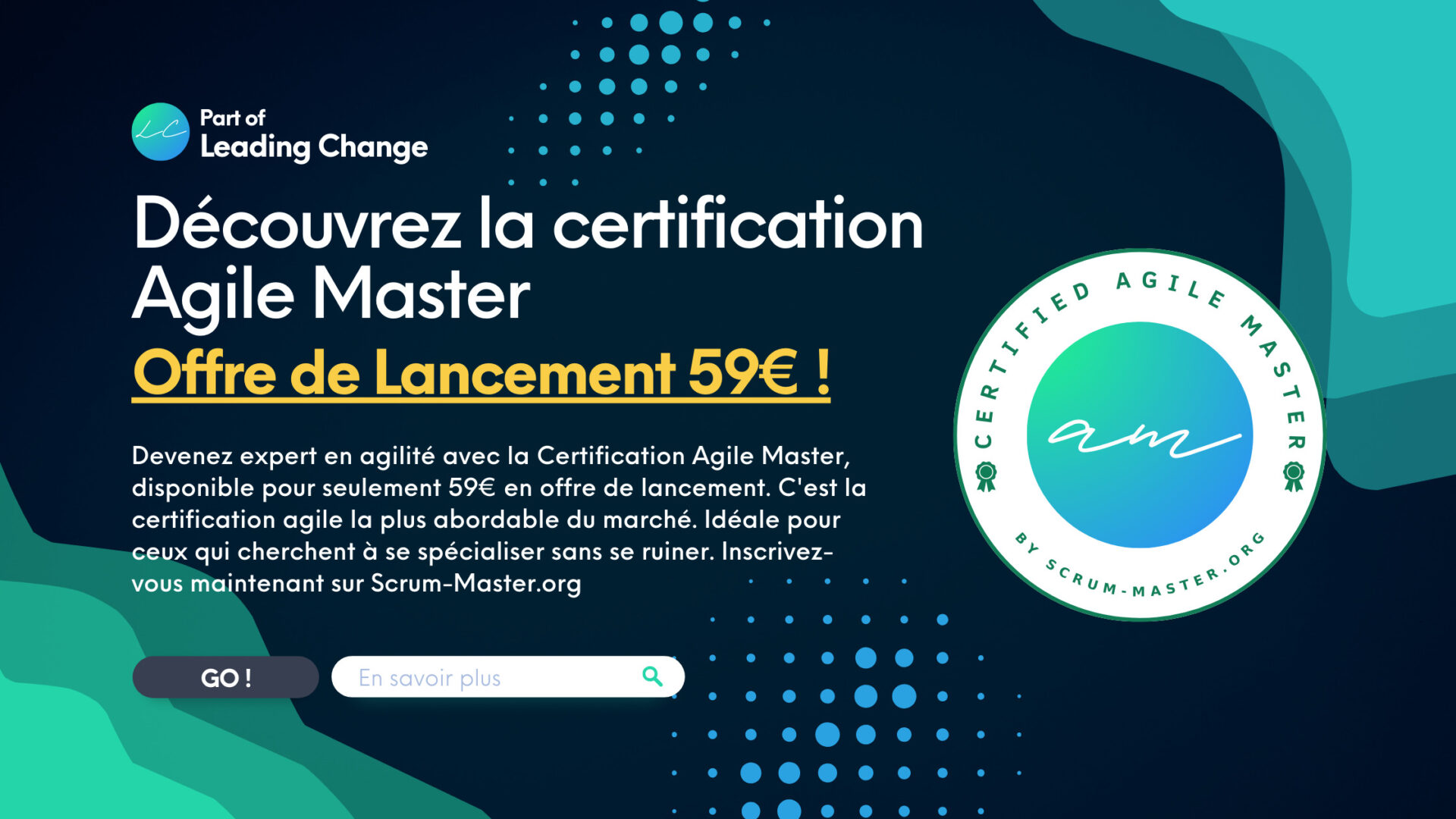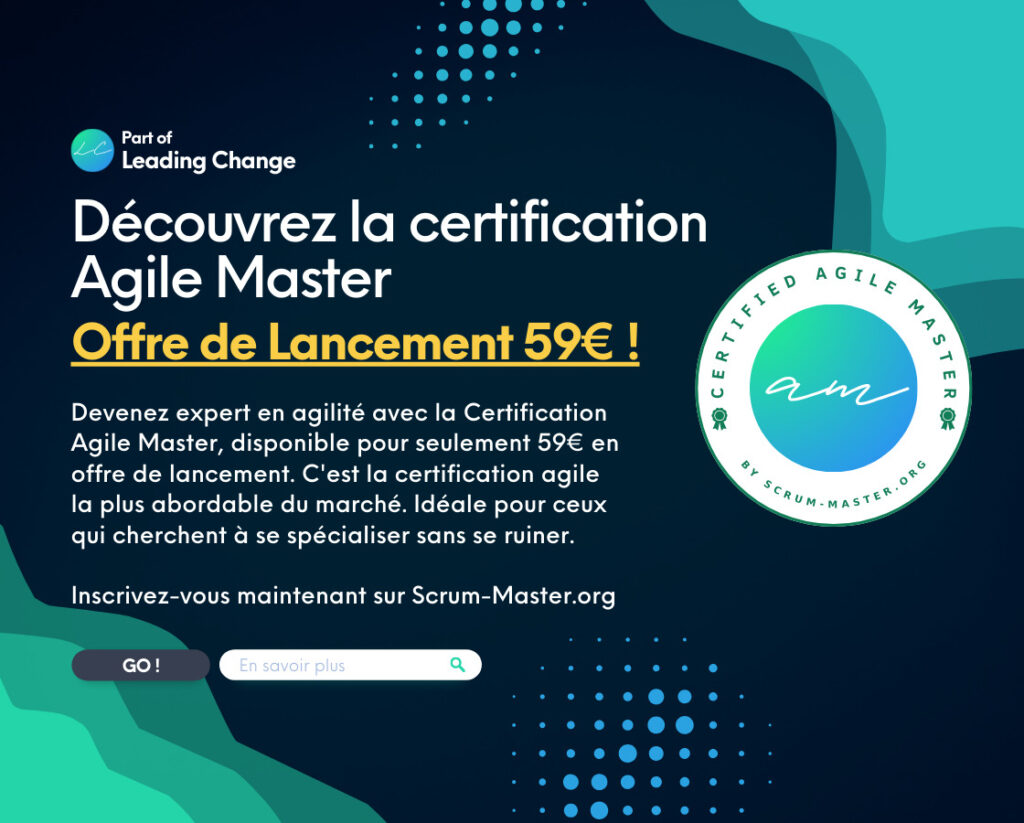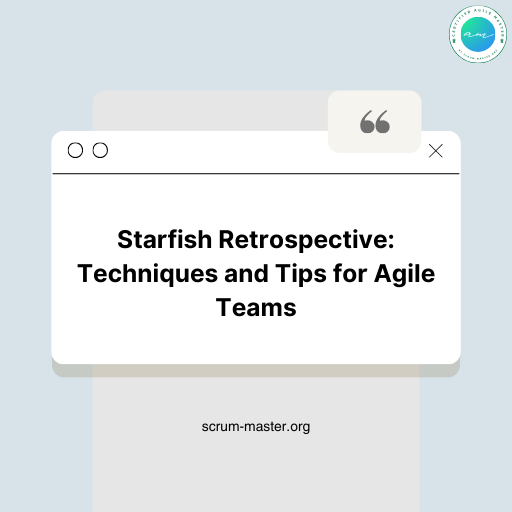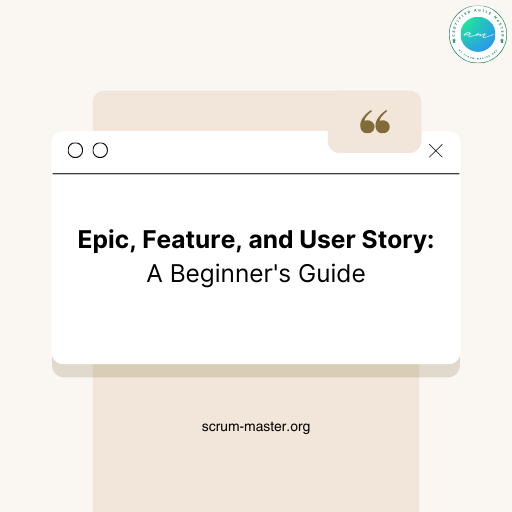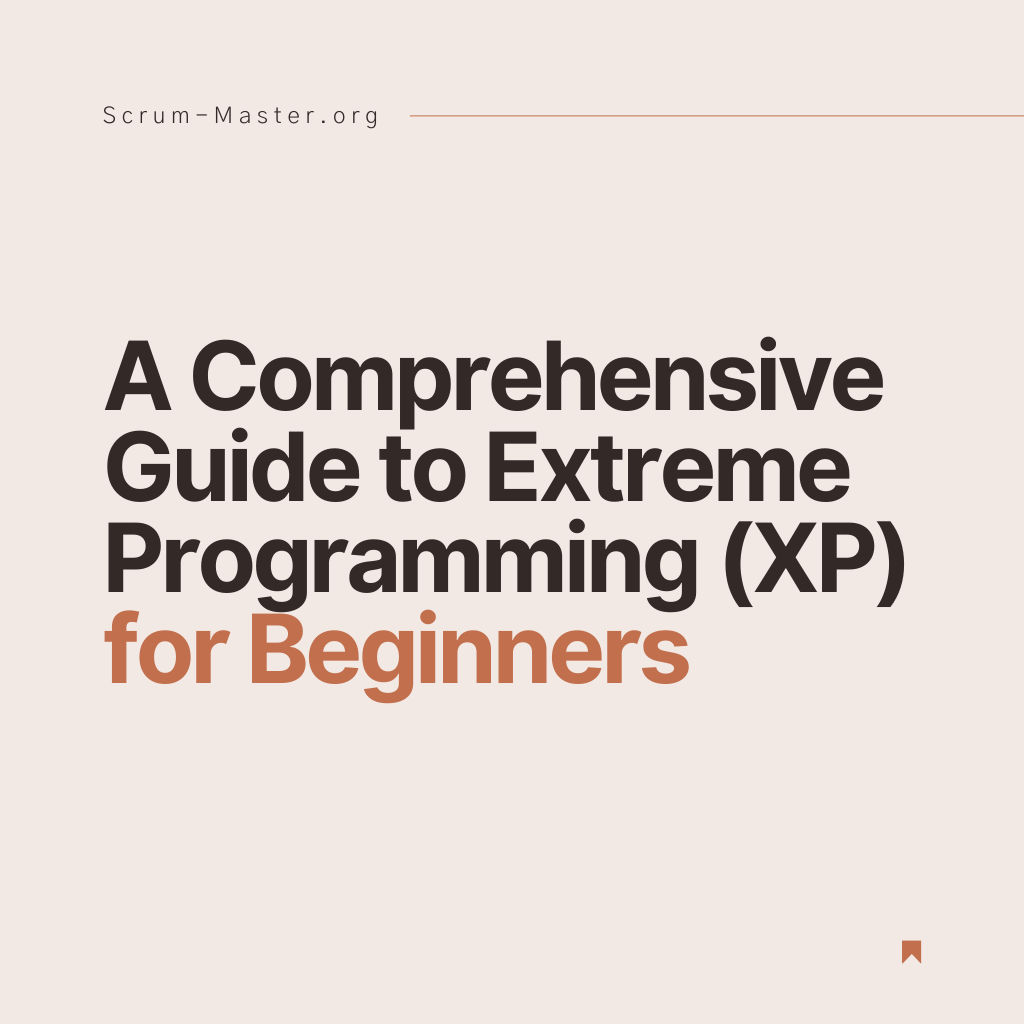In a world where agility has become a must, understanding and embodying the role of Business Owner (or BO) within the SAFe®framework is crucial to the success of companies committed to Agile transformation.
Business Owners, playing a pivotal role in Agile Release Trains (ARTs), do more than just manage products or projects; they are the architects of business objectives, the guardians of ROI (return on investment) and key players in the company’s strategic alignment.
This article aims to demystify their role, highlighting the importance of their contribution beyond the financial aspects, and exploring the skills, responsibilities and challenges associated with this key position in a SAFe® environment.
Index
Can you become a Business Owner in your SAFe organization?
To consider the role of Business Owner within the SAFe® framework, it is essential to understand the importance of adopting Lean-Agile principles. This approach is not just about project management, but encompasses a broader vision of governance, leadership and innovation. Here are some key aspects to consider:
Adopting Lean-Agile Leadership: Are you ready to adopt a Lean-Agile leadership style that focuses on empowering teams to make autonomous decisions, while guiding and supporting their efforts to achieve your company’s strategic goals?
Active participation and commitment: As a BO, your active participation in SAFe® ceremonies such as PI Planning is crucial. Can you engage in these events to guide teams, remove obstacles and effectively communicate business priorities?
Close collaboration with teams: The ability to work closely with Product Owners, development teams, and other stakeholders is essential. This collaboration ensures that business objectives are aligned with user needs and ART’s technical capabilities.
Contribution to Governance and LPM: As Business Owner, you play a key role in governance and Lean Portfolio Management. This responsibility involves ensuring that investments and initiatives are in line with the company’s overall strategy.
Flexibility and adaptability: In today’s fast-moving business world, your ability to remain flexible and adapt to new trends and requirements is a major asset. How do you plan to maintain this adaptability while guiding ARTs to success?
By answering these 5 points, you will not only assess your ability to become a Business Owner in SAFe®, but also your capacity to integrate Lean-Agile principles into your leadership style and managerial approach.
It is this combination of skills and mentality that defines an effective and dynamic BO in a SAFe® environment.
Business Owners in SAFe®: Roles and Responsibilities
Below, I’ll take up the official SAFe® definition of the responsibilities of a B.O. You’ll find here all his responsibilities during the product life cycle: Before, during and after PI Planning.
Preparing for PI Planning: Key role of Business Owners
Business Owners play an essential role in the preparation phase of PI Planning, which involves detailed responsibilities such as :
Strategic Analysis of Business Objectives: They assess the company’s long-term business objectives and determine how these objectives can be achieved through ART’s efforts. This implies a deep understanding of business needs and how they can be translated into Epics and Features in the backlog.
Collaboration with stakeholders: Business Owners work closely with various stakeholders, including Product Managers, System Architects and Release Train Engineers (RTEs), to align PI Planning objectives with the company’s overall strategy. This collaboration is crucial to ensure that business priorities are fully understood and integrated into planning.
Backlog preparation and review: Prior to PI Planning, they are actively involved in refining and revising the backlog. This involves working with Product Owners to ensure that backlog items are correctly prioritized and that business objectives are correctly represented.
Identification of Risks and Dependencies: They identify potential risks and external dependencies that could impact the train, and work with stakeholders to develop mitigation plans. This may include considerations related to suppliers, market regulations, or other external factors.
Communication and Goal Alignment: An important part of their role is to clearly communicate business objectives and expectations to stakeholders prior to PI Planning. This ensures that everyone in the ART understands the direction and priorities for the coming IP.
Impact of Business Owners on PI Planning
The role of Business Owners during PI Planning is dynamic and multidimensional, encompassing crucial responsibilities such as :
Presentation of the Business Vision and Objectives: BOs play a key role in articulating the business vision and the objectives expected of the IP. This presentation helps teams understand the wider context of their work and how it fits into the company’s strategic objectives.
Active participation in Plan Reviews: They actively participate in plan reviews, providing vital feedback and ensuring that team plans are aligned with business objectives. Their perspective helps to identify potential gaps in plans, and to ensure that commitments made are realistic and achievable.
Assigning Business Values to IP Goals: A critical aspect of their role is to assign business values to IP goals, which guides teams in prioritizing their work. This assessment is crucial to aligning ART’s efforts with the most valuable results for the company.
Approval of final plans: At the end of PI Planning, they review and approve the final plans. This responsibility involves assessing whether team plans are well aligned with overall strategy and business objectives, while being achievable and viable.
Strengthening Collaboration and Communication: They facilitate communication between teams and between teams and stakeholders, ensuring that all ART members are aligned and committed to common goals.
Sponsored: Create your PI Planning online with Miro!
Role of BOs in IP execution and Sprints
During IP execution and sprints, Business Owners have key responsibilities for ensuring the alignment and success of initiatives:
- Progress and Results Monitoring: They closely monitor the progress of work in relation to defined business objectives, ensuring that ART’s efforts are aligned with strategic expectations.
- Participation in System Demos: Business Owners regularly attend system demos to provide constructive feedback and to assess progress against business objectives.
- Collaboration with Product and Release Management: They work closely with Product Managers and Release Managers to ensure smooth communication and effective coordination, particularly in managing deliveries and releases.
- Adapting to change: When priorities change or adjustments are needed, they step in to help realign ART’s efforts, demonstrating an ability to adapt and respond agilely to new circumstances.
The Business Owner's role during Inspect and Adapt: : Improvement and Strategy
At Inspect and Adapt events, the role of Business Owners is crucial in facilitating continuous improvement:
- Evaluation of Business Objectives and Results: They assess whether business objectives have been met, and participate in the analysis of performance gaps, in collaboration with Product Management.
- Contribution to Problem Solving: BOs play an active role in problem-solving workshops, identifying systemic obstacles and contributing to the development of solutions to improve ART’s velocity and efficiency.
Extended commitments by Business Owners beyond PI Planning
In addition to their role during PI Planning and sprints, Business Owners have extensive commitments that contribute to the overall success of ART:
- Facilitating inter-team communication: They ensure fluid communication between ART teams and external stakeholders, removing obstacles and facilitating problem-solving.
- Participation in Lean Portfolio Management (LPM ): Business Owners are involved in LPM activities, contributing to strategic alignment and decision-making at portfolio level.
- Promoting Innovation and DevOps: They encourage a culture of innovation and support DevOps practices within the organization, fostering an environment conducive to continuous learning and improvement.
How much does a Business Owner earn?
In this section, we’ll explore not only the remuneration aspects of Business Owners in a SAFe® setting, but also the path to this role and the factors that can influence their salary.
Journey to the role of BO :
- Professional experience: Most Business Owners in SAFe® have solid experience in project management, team leadership or similar roles. This experience is crucial to understanding the dynamics of an agile organization.
- Training and Certification: SAFe® certifications, such as SAFe® Product Owner/Product Manager (POPM ) or SAFe® for Teams, can be an important asset. These certifications demonstrate a thorough understanding of SAFe® principles and practices. In addition, our Agile Master Certification offers an opportunity to deepen your skills and knowledge in agility, strengthening your professional profile and broadening your career prospects in the Agile field.
- Leadership and management skills: Strong leadership and management skills are essential, as Business Owners often have to navigate complex environments and guide teams towards strategic goals.
Factors Influencing Business Owners’ Salaries :
- Experience and expertise: The level of experience and specific expertise in the industry or technology can significantly influence salary.
- Size of organization and ART: Larger companies or those with more complex ARTs tend to offer higher salaries due to the increased complexity of the role.
- Geographical region: Where you work also plays an important role, as salaries vary considerably from one region to another.
- Market demand: Demand for qualified Business Owners in the market can also influence salary. In sectors where agility is particularly valued, BOs can expect competitive salaries.
Salary range for Business Owners :
In France, the salary of a Business Owner in a SAFe®, Agile and Lean solution generally varies between €60,000 and €120,000 per year. This range may vary depending on the factors mentioned above.

By understanding these different aspects, aspiring Business Owners can better assess their career potential and professional development opportunities within SAFe®.
Conclusion: Finding your way to success as a Business Owner in SAFe®.
In conclusion, the Business Owner’s role in SAFe® is both demanding and rewarding. This key role is essential for the success of Agile Release Trains and, by extension, for the overall success of the company’s Agile transformation. As a Business Owner, your influence ranges from the strategic definition of business objectives, to active participation in SAFe® events, to monitoring and adjusting plans as they are implemented.
The salary range for Business Owners reflects the importance and complexity of this role in an Agile environment. With a combination of appropriate training, leadership experience, and a deep understanding of Lean-Agile principles, aspiring BOs can aspire not only to competitive remuneration, but also to a significant impact on the direction and success of their organization.
For those seeking to become Business Owners in SAFe®, the path involves an ongoing commitment to learning, adaptability and excellence in Agile leadership. By fully embracing the responsibilities and challenges of this role, Business Owners can play a decisive role in creating a dynamic, high-performance Agile environment.
Further information
Please find below our useful links:
- This article is based on the official definition of BO proposed by the official SAFe website.
- The most comprehensive book on the SAFe method by Richard Knaster: SAFe 5.0 Distilled – Achieving Business Agility with the Scaled Agile Framework.
- The following video by Ahmed Sayed Agile Coach presents some interesting content on SAFe.

